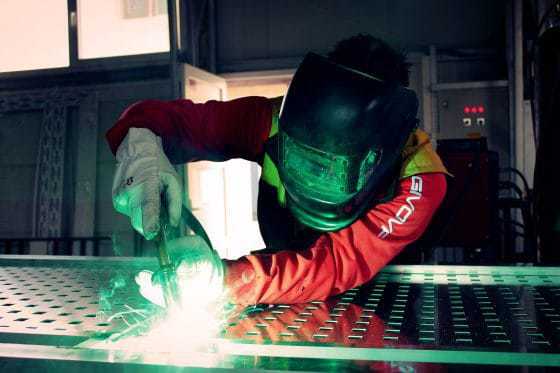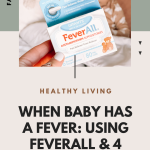This is a sponsored conversation written by me on behalf of FeverAll® Acetaminophen Suppositories. The opinions and text are all mine.
Do you know what to do when a baby has a fever? When your little one spikes a high temperature, it can be scary for the entire family. As parents, it is hard to feel hopeful in moments of hopelessness. Nothing leaves one feeling more helpless than watching a young child in pain, wishing something could be done to help them. Fevers, although a sign that one’s body is fighting off infection, can be terrifying. We’re here to introduce you to FeverAll, a helpful product, and give tips on how to calmly treat a fever.

What Is A Fever?
Let’s first get some common misconceptions out of the way when wondering what to do when the baby has a fever. A fever is NOT an illness. On the contrary, a fever is a symptom of an underlying illness. A fever is an indication that a body is fighting an illness, as well as proof of a correctly-functioning immune system. By all accounts, we should be celebrating a fever as a sign that a baby’s body is acting as it should. Why, then, does it feel so wrong and so awful when it is YOUR little one with their body acting completely and perfectly as it should? Because fevers are scary. Or, rather, breaking a fever can be scary.
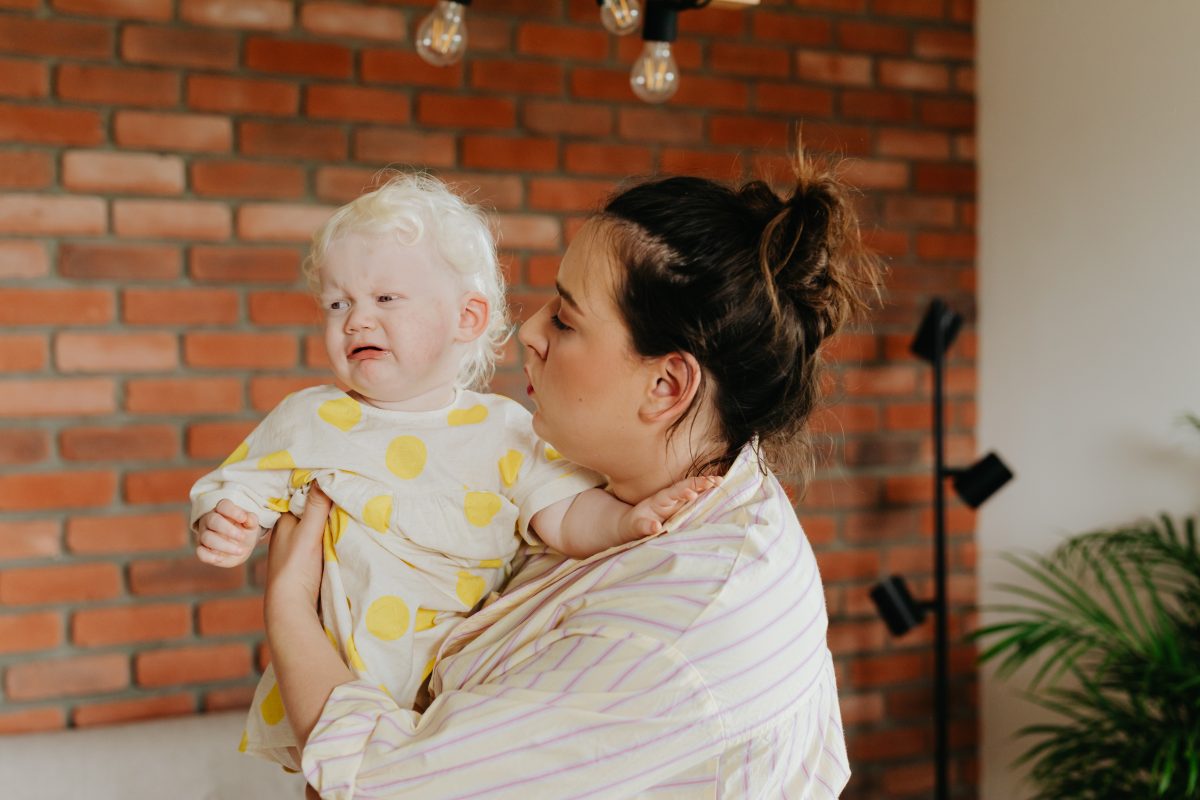
Why Do Babies Get Fevers?
A few common reasons for fevers include:
- Reaction to a recent vaccination
- Being outside too long on a hot day
- Dressing too warmly and overheating
- A virus or infection in one’s body
The average person has a normal body temperature of 98.6 degrees, with a varying range of 97.5 to 99.5. It should be mentioned that a specific threshold has been set by the American Academy of Pediatrics in regard to the exact number that constitutes a fever in an infant. That magic number that causes concern, or allows parents to fend off nerves, is 100.4 degrees Fahrenheit. For infants who are 3 months or younger, and who have a rectal temperature of 100.4 or above, it is recommended that you immediately call your doctor or head to the nearest emergency room. Temperatures above 100.4 in a tiny baby could be an indication of a potentially life-threatening infection.

Wondering what to do when your baby has a fever or what is happening inside your baby when he or she develops a high temperature? In the center of your brain lies the hypothalamus. This part of the brain serves as the thermostat for your body, the thing that decides whether to turn the heat or air conditioning on. Your hypothalamus knows what temperature your body should be, and sends messages to the rest of your body in order to maintain your ideal temperature. Hence, a fever develops.
Possible Side Effects of Fevers
Fevers do not act alone. In fact, they bring many unpleasant symptoms with them. Common side effects that are associated with fevers include:
- Being lethargic or overly tired
- Crankiness and fussiness
- Loss of, or minimal appetite
- Lack of interest in people and/or normal activities
- Sweating
- Body chills
- Seizures

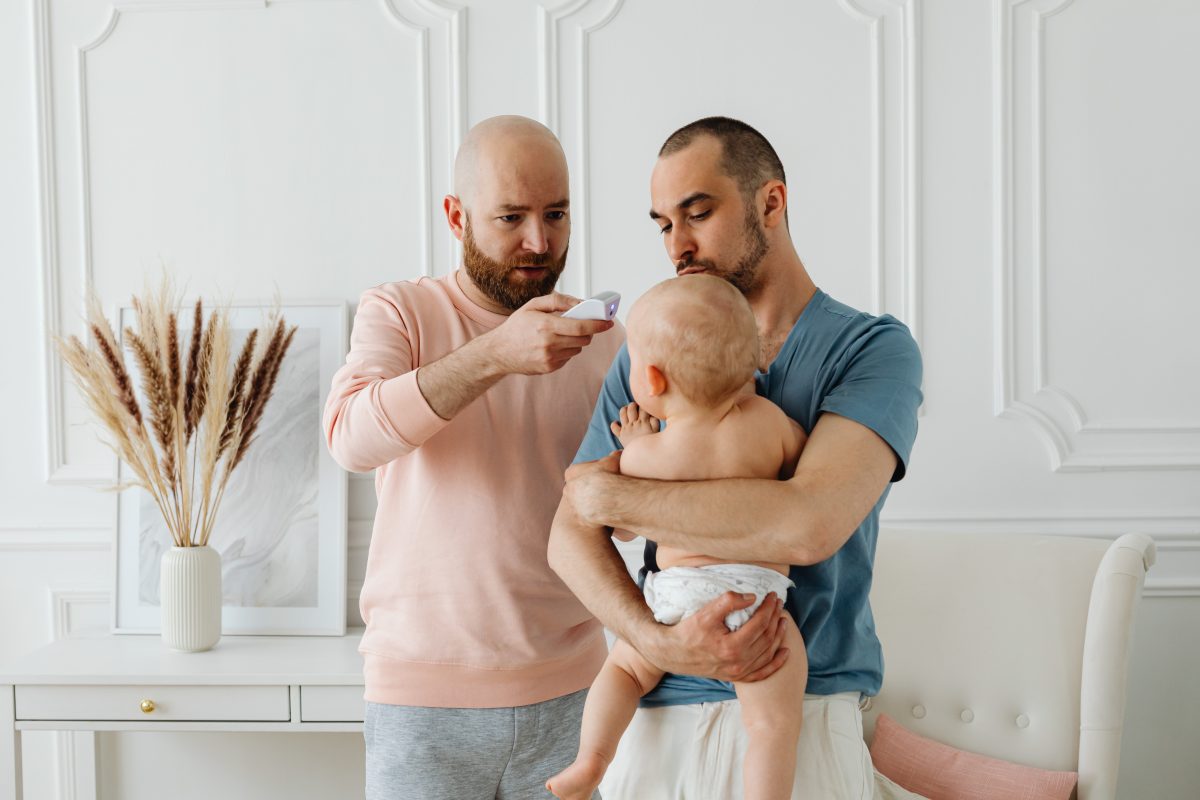
How Do You Know Baby Has A Fever?
Some parents are able to predict that their little one has a fever simply by touch. For grown-ups that weren’t born with the innate ability to predict body temperature based on feeling, there are endless products to turn to. In addition to a warm body, parents often rely on thermometers to verify and confirm their thoughts. With endless options on the market, it is difficult to know what to do when the baby has a fever and where to turn, and what product to rely on. Even deciding on the appropriate type of thermometer can be a challenge. According to many studies, rectal thermometers provide the most accurate readings for infants and toddlers up to 3 years.
Properly Using a Rectal Thermometer
As new parents, it may seem uncomfortable when first introduced to the rectal thermometer. However, the rectal thermometer is the only way to get an accurate reading of one’s core temperature. To properly take a rectal temperature on a baby, first make sure that the thermometer is clean and sanitary. To do this, wipe the end tip with rubbing alcohol on a cotton ball. If rubbing alcohol isn’t available, use soap and water to clean.
After laying your infant on a flat service with their knees pointed to their chests, use petroleum jelly around the thermometer tip and gently insert it about 1 inch into the rectal opening. Holding the thermometer in place for the required amount of time, wait until you hear the “beep” before removing it. Again, remember not everything above 98.6 degrees is a temperature. The threshold set by the American Academy of Pediatrics lists a fever as anything above 100.4.
How Do You Treat A Baby’s Fever?
What to do when the baby has a fever:
- Increase fluids – It is important that babies don’t get dehydrated
- Monitor temperature to know when to seek medical attention or advice
- Allow for extra sleep and cuddle time
- Keep baby as comfortable as you can during times of fever, providing comfort items such as blankies, pacifiers, or special stuffed animals
- Use a digital thermometer for the most accurate reading for children 36 months and under
One important thing to remember is to always treat the child, not the number on the thermometer. It is normal and acceptable for a baby’s temperature to naturally fluctuate due to a variety of reasons. Warm baths, physical exertion, and weather can all play a part in body temperature. When your little one has a legit fever, however, be prepared to take action.
FeverAll Infants’ Strength Acetaminophen Suppositories have been a go-to option for parents for more than 30 years. By offering Feve rAll acetaminophen suppositories, parents are able to help children who aren’t otherwise able to keep oral medication down. This could be due to vomiting or refusal. Fever All acetaminophen suppositories are convenient for parents and helpful to the health of the sick child.

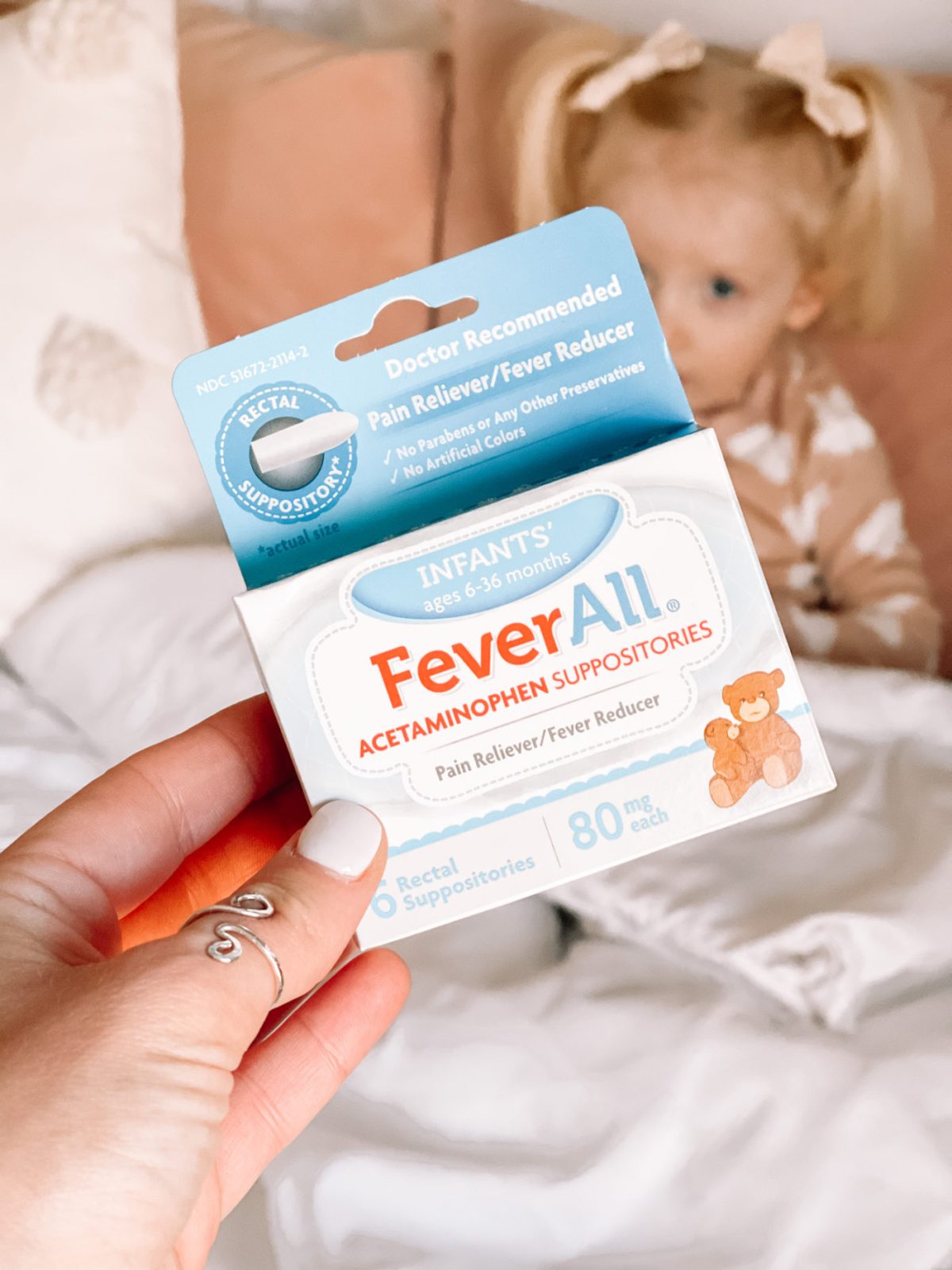
What are Fever All acetaminophen suppositories? It is a safe and reliable alternative to oral acetaminophen medication. It is available for children beginning at the age of 6 months. But they even have made Fever All suppositories for toddlers too. The best part is that each suppository distributes the exact dosage for your child, without the hassle of midnight measuring. They package the FeverAll Suppositories Dosage by weight.
READ MORE: Top Baby Products You Need When Welcoming a New Baby
Likewise, the child that refuses medicine, spits up frequently, or cannot swallow medication due to vomiting won’t leave you with partially distributed doses thanks to Fever All. Precise, age-appropriate doses are administered, the guessing game is eliminated, and their website provides clear and easy-to-follow instructions. Fever All suppositories 80 mg dosage is for infants. It provides peace of mind for parents, and instant relief for little ones. #BeFeverReady
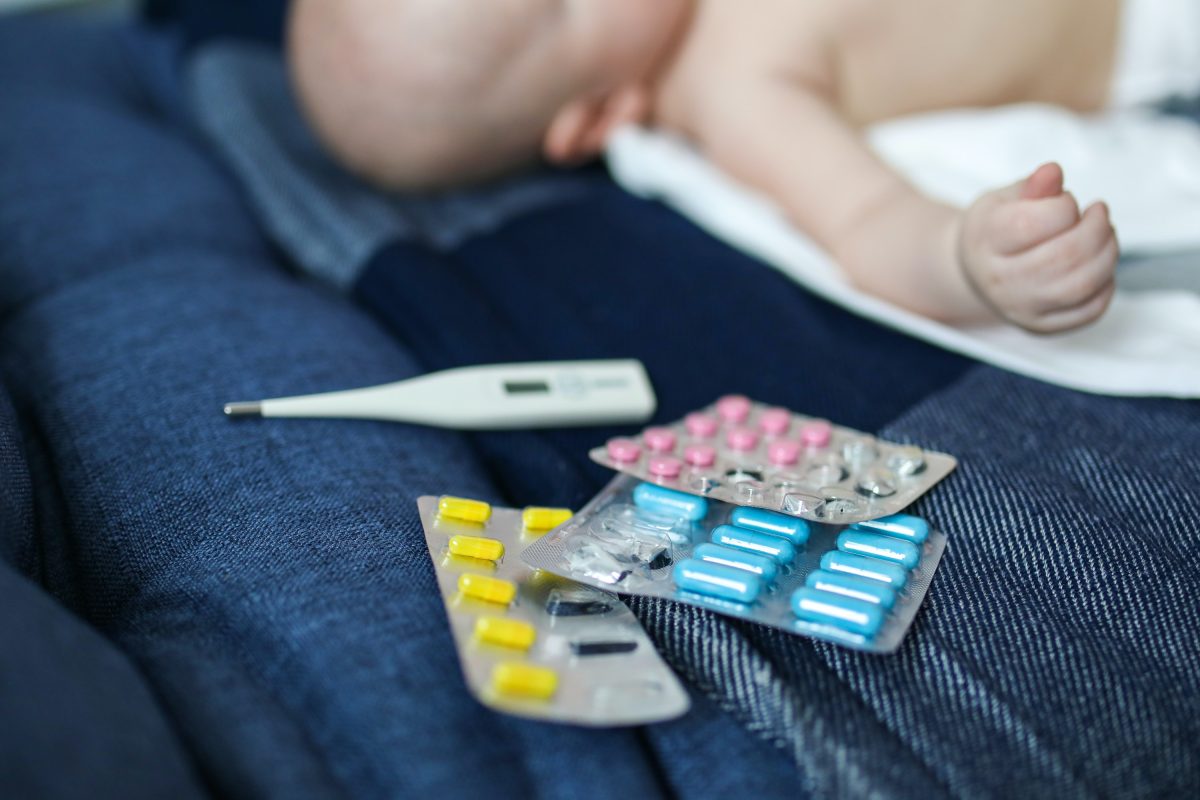
When Should You Seek Help?
As a parent, you should never hesitate to seek medical care if you are unsure what to do when the baby has a fever. While 9-1-1 and your local emergency rooms are options, there are also many pediatricians who offer night nurses that are a mere phone call away. If you have a situation that you won’t be able to sleep through and want to discuss your specific scenario with a trained professional, reach out to your doctor’s office to see if they offer an after-hours phone number to reach someone. Most require you to leave your name, number, and a brief message, and will get in touch with you within the hour.
To avoid scrambling in the midst of a scare, make sure you have the numbers researched and ready to go when needed. In babies younger than 3 months of age, a rectal thermometer reading of 100.4 is always and without question a need for medical attention. Because babies do not display symptoms the same as older children, and because the protocols and necessary tests are different in infants up to 3 months, you must consult with your physician over the phone or in-person to get your baby the best care.
When your sweet baby has a fever, it can be scary and stressful. However, by using Fever All, and trying out a few other safe treatments, parents can help their babies feel more comfortable and overcome their worries. While parents should keep a close eye on their baby’s temperature throughout the course of the fever, they should also take any extra steps necessary for their child’s safety. With Fever All and a few knowledgeable strategies, you can help your baby feel better and get through the fever with peace of mind.
Use FeverAll® only as directed. If you have specific questions about fever, acetaminophen, or using Fever All, speak with your child’s pediatrician. Fever All Acetaminophen Suppositories are available at major retailers and drugstores across the U.S., such as Fever All Suppositories Walmart, CVS, Rite Aid, and Walgreens. For more information and current offers, visit www.FeverAll.com.
CONNECT WITH DAILY MOM
💖 NEWSLETTER: DAILY READS IN YOUR INBOX 💖
Sign up to receive our picks for the best things to do, see and buy so you can relax and focus on more important tasks! Let us help you be the best version of yourself you can be!
BE SOCIAL WITH US
📌 LOVE IT? PIN IT!📌

This post is meant for educational purposes only. It is not intended to replace medical advice from your physician, doctor or health care professional. Please read our terms of use for more information.
Photo credits: April Walker




































